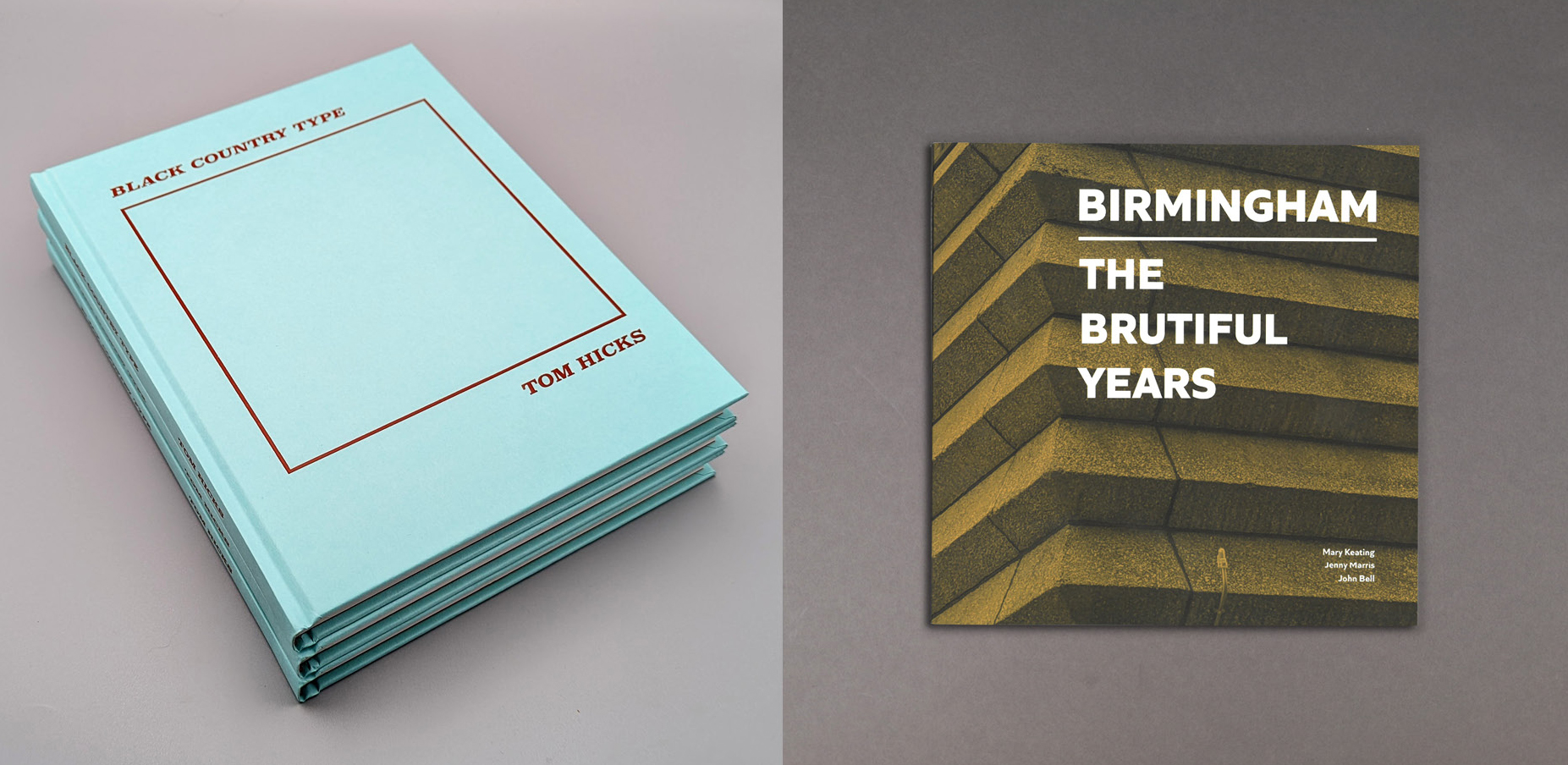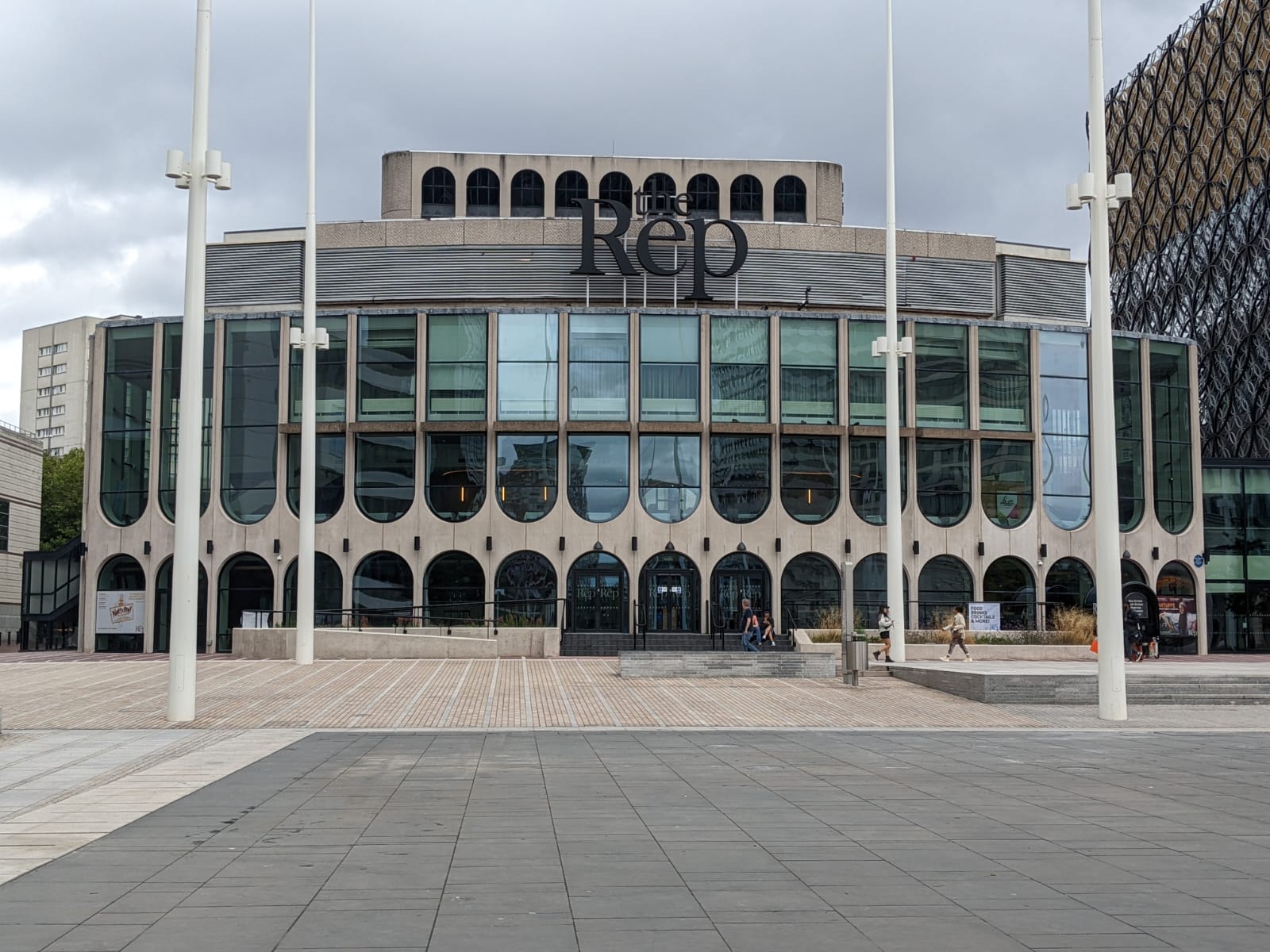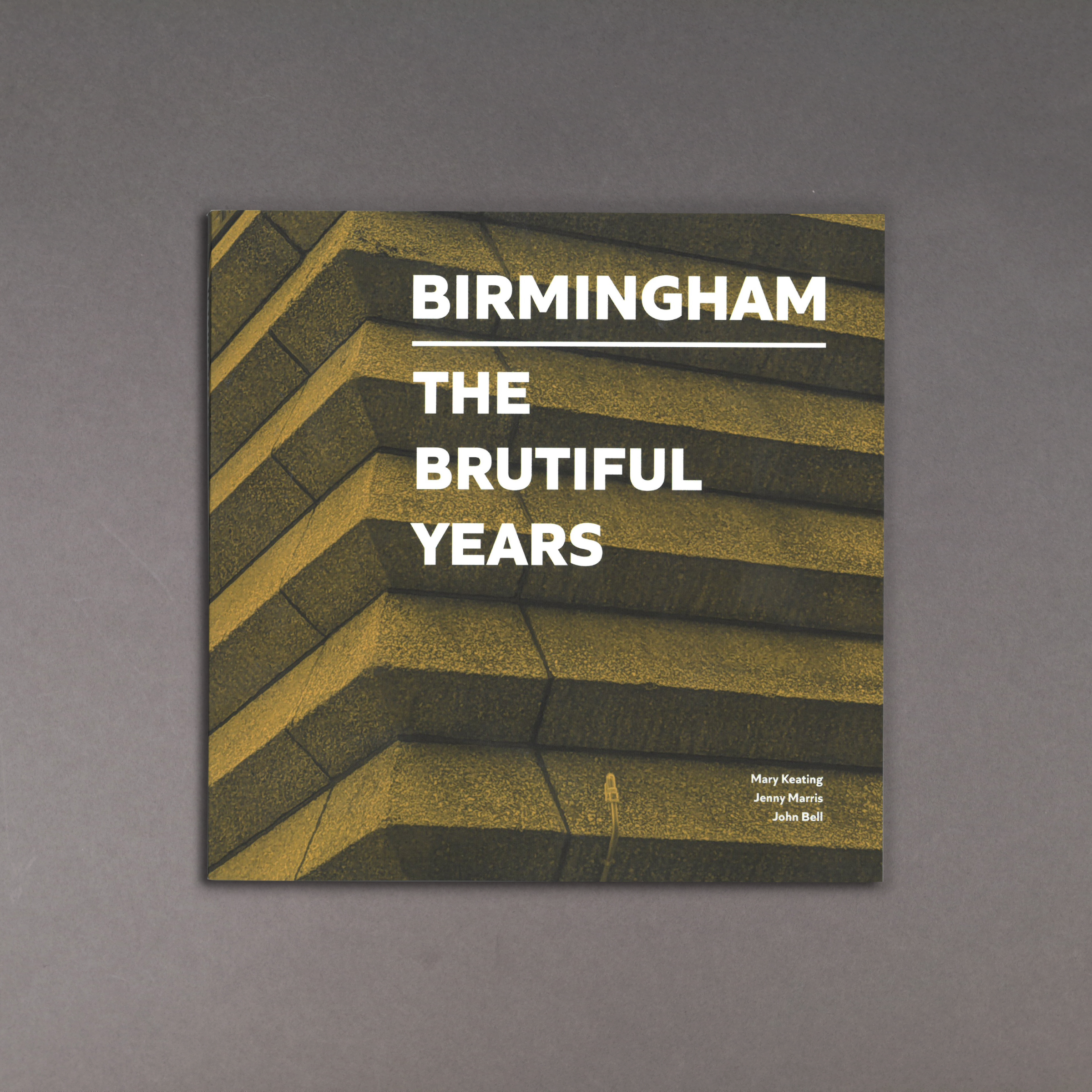
Birmingham’s Brutalist Buildings
The authors of the critically acclaimed book Birmingham: The Brutiful Years tell us about their favourite Brutalist buildings in Birmingham.
To find out more, meet the authors Mary Keating, Jenny Marris and John Bell on Thursday 16 February, 6-7pm for a discussion on Birmingham’s post war architecture, followed by a Q&A and book signing. Free, book tickets here.
Birmingham: The Brutiful Years is available to buy from Ikon Shop.
What’s your favourite Brutalist building in Birmingham? Share your photos with us on social media #ikongallery @ikongallery.
House of Fraser
Mary Keating
So many of us fondly remember a visit to Rackhams as a glamorous interlude in any shopping trip to Birmingham. Sadly, department stores are closed or closing across the country. Historic England is so concerned they have announced a thematic investigation into the department store as a unique building type.
House of Fraser is Birmingham’s most iconic Festival of Britain building. Opened in 1961, designed by T P Bennett and Son, the building exudes mystique. The concertina windows are such fun, while inside to sweep down the stairs is to be in a Hollywood movie.
An application for statutory listing was made in 2020 but turned down by Historic England on the grounds that “incremental changes especially to the interior have impacted on its claims to special interest.” Two years on they might have come to a different decision.
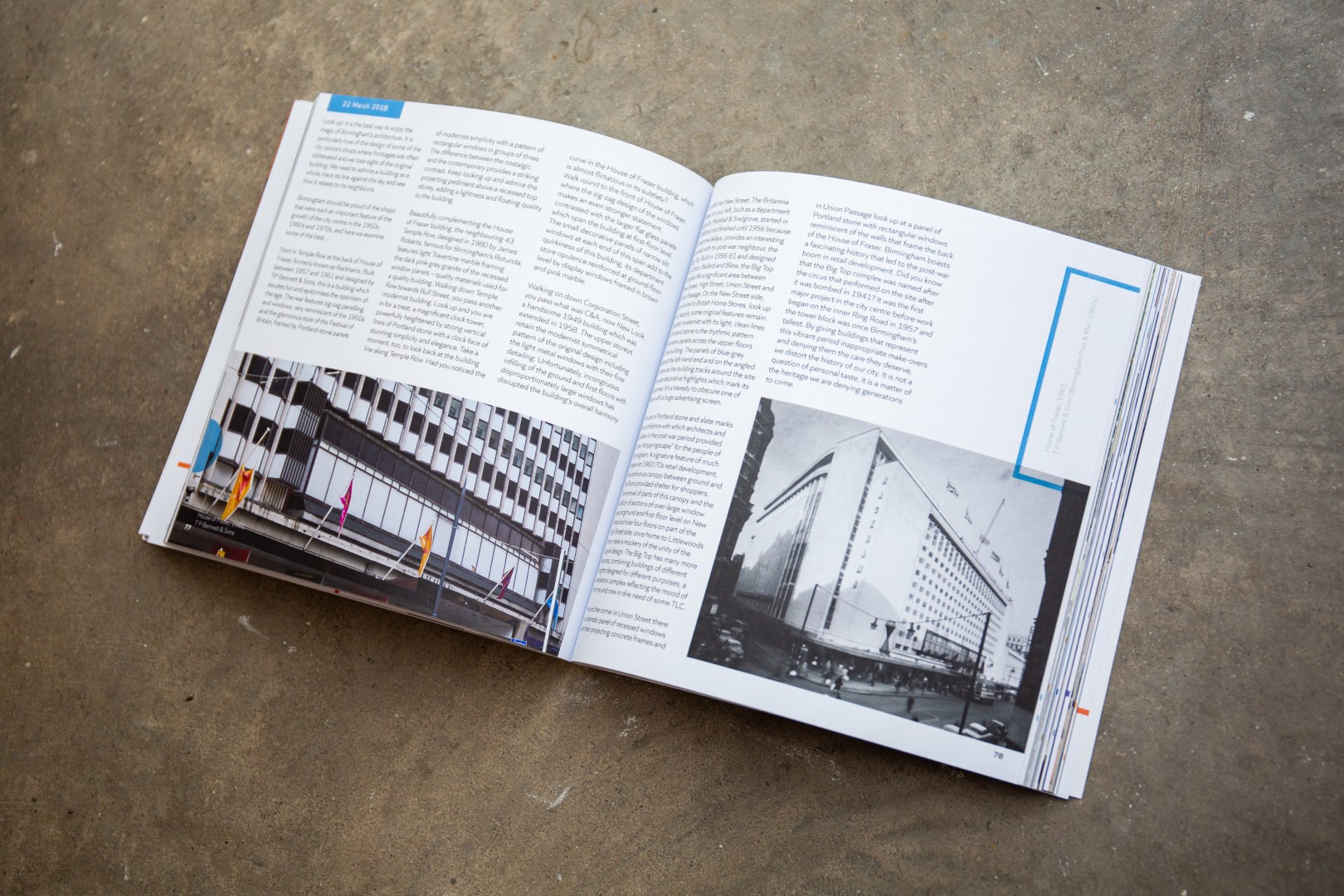
Birmingham Repertory Theatre
John Bell
Writing about the Rep offered the privilege of a face-to-face conversation with its architect Graham Winteringham. Listening to Graham I realised that it is a building designed from the inside out. He consulted theatre practitioners at the highest level, including Sir Laurence Olivier.
Opened in 1971, the Rep’s auditorium and stage have a unity of purpose which was ground-breaking at the time. There is no regimented tiered auditorium here, just a broad sweep of seats that seem to embrace the stage, a place where actors and audience are in the same room. The auditorium opens out on to sweeping curved foyers and wide staircases. The building is dramatically lit at night and flooded with light by day from the curving arcade of arched windows filling the full height and width of the façade.
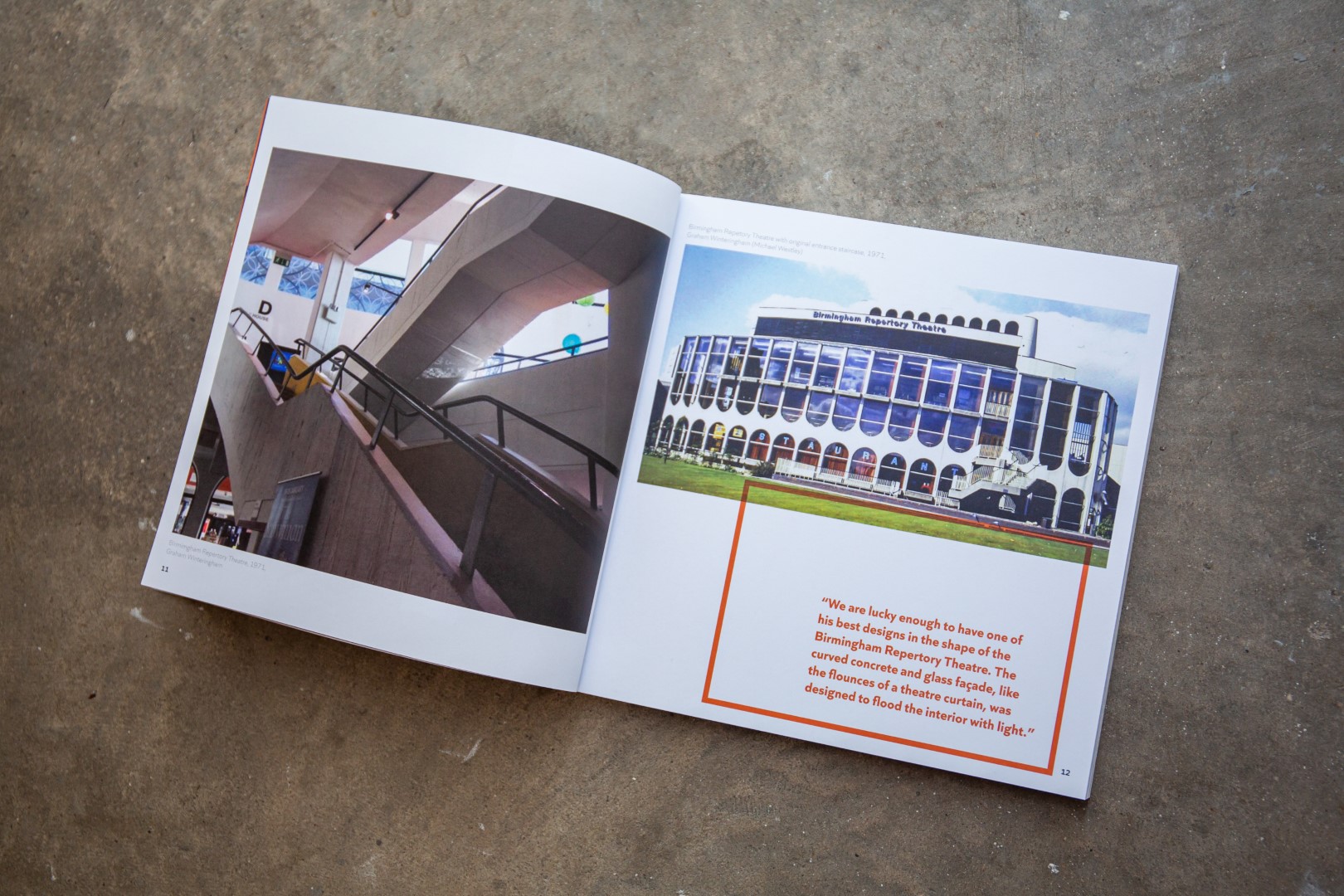
Alpha Tower
Jenny Marris
There are some buildings that are so right they seem to have always been there and Alpha Tower is one of those rare buildings, an essential part of the fabric of Birmingham. Pure modernism, no gimmicks, loud colours or quirky patterns, just timeless elegance. It was built in 1973, designed by George Marsh of Richard Seifert & Partners. It carries its twenty-eight floors with understated poise and lightness. Balanced delicately on tapered white pilotis, it seems that, “despite being constructed out of concrete the tower looks lightweight almost like it was folded carefully out of paper; a piece of sculptural origami.”
In 2014, it was granted Grade II listed status by Historic England who described it as “one of the most aesthetically successful office buildings in Birmingham”. Through fifty years of different uses, different occupants and internal changes, Alpha Tower sails on, a living tribute to British modernist architectural excellence.
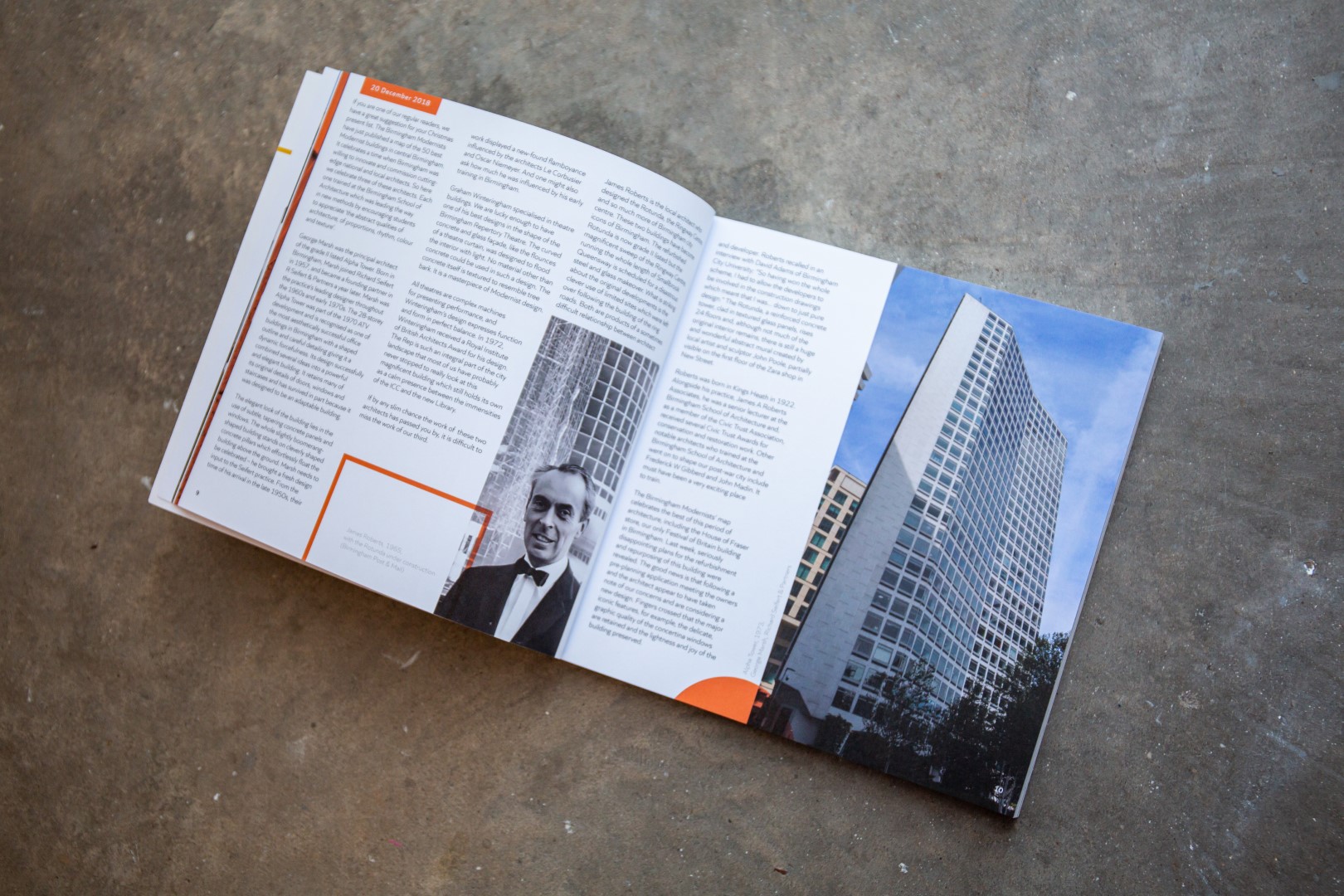
Related



